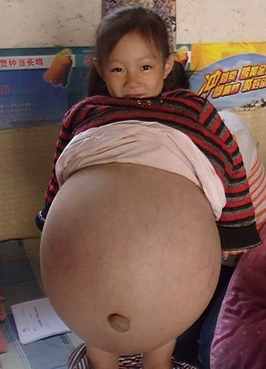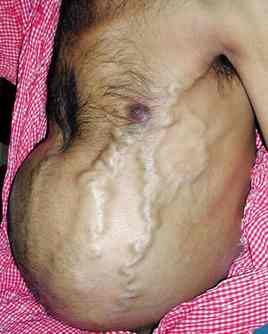Budd Chiari Syndrome
What is Budd Chiari Syndrome?
Budd Chiari syndrome is a rare disease produced by thrombotic or non-thrombotic hepatic venous outflow blockage. Dr. Budd explained the disease in 1845, and Dr. Chiari gave additional information regarding the primary pathologic explanation of the liver condition in 1899. The three main characteristics of Budd Chiari syndrome are enlargement of the liver, ascites, and sudden pain in the abdomen.
The majority of patients who have this syndrome usually also have the following underlying conditions:
- thrombotic diathesis
- polycythemia vera
- paroxysmal nocturnal hemoglobinuria
- pregnancy and use of birth control pills
- tumors
- chronic inflammatory diseases
- clotting disorders
- infections
Signs & Symptoms
The majority of the patients who have Budd Chiari syndrome have the three chief manifestations:
- Ascites – abdomen becomes distended because of the fluid accumulation in the abdominal cavity
- Pain in the abdomen – sudden in onset, accompanied by nausea and vomiting
- Hepatomegaly – enlargement of the liver, blood can flow toward the liver, but not away from it
The accumulation of blood inside the liver can destroy the liver cells. This may subsequently lead to jaundice or yellowish discoloration of the eyes and skin and problems in the kidney.
Causes
Usually Budd Chiari syndrome was brought about by a blood disorder, for instance polycythemia vera or Sickle cell disease. Furthermore, it can also be brought about by the use of birth control pills, pregnancy, liver cancer, liver trauma, infection, and autoimmune diseases.
The causes or underlying conditions that can cause Budd Chiari Syndrome are the following:
- hepatic vein thrombosis
- hepatic vein compression caused by a tumor
- pregnancy and the use of birth control pills
- infection
- blood disorders
- congenital venous webs
- inferior vena caval narrowing
Diagnosis
The most common diagnostic tests to confirm Budd Chiari Syndrome are the following:
- MRI or Magnetic Resonance Imaging
- Ultrasound
- Liver biopsy
The liver cells taken from the liver biopsy will be examined under the microscope to confirm the disease. The fluid that had accumulated in the abdomen can also be collected for confirmatory testing.
The common manifestations of Budd Chiari Syndrome, which is Hepatomegaly, ascites and abdominal pain are not confirmatory for the diagnosis because it is also the symptoms of a lot of liver disorders.
It is really necessary that the patient undergo many diagnostic tests to help the doctor come out with the correct diagnosis.
Treatment
If there is no treatment provided, Budd Chiari Syndrome can seriously injure the liver.
Here are the following treatments for Budd Chiari Syndrome:
- Drugs that can dissolve blood clots or lessen new blood clot formation can be prescribed.
- Low sodium intake can regulate the growth of ascites.
- Special surgeries can alleviate the blockage of blood in the liver.
- A liver transplant can be a last resort if the liver is severely injured.
Pictures

Abdominal distension (ascites) in Budd chiari syndrome

Picture of Engorged veins in Budd chiari syndrome
